#Cultural Representation
Text

Disclaimer: I wrote this post as an enthusiast for Dune: Part Two (2024) and the ‘seductively sick’ portrayal of Feyd-Rautha Harkonnen. Any other thoughts or comments are welcomed and appreciated!
TL;DR: The aesthetic choice of Feyd’s blackened teeth aligns well with the widespread custom in ancient Vietnam — a sign of beauty, maturity, and even brutality. Read more below.
Original photos belong to their respective owners.
Teeth blackening in Dune: Part Two (2024) through the lens of Vietnamese culture
One thing that mesmerizes me about Feyd in the 2024 Dune movie is his blackened teeth. Not only does this provide an impressive physical appearance for Feyd, but it also reminds me of a long-lost fashionable custom in my home country.
Original inspiration. As far as I know, the film crew creatively invented this aesthetic for the movie from the inspiration of the black mamba (a type of venomous snake in sub-Saharan Africa) and images of geisha with black teeth. Similar to folklore and legends, other countries and ethnicities also dyed their teeth black with their local traditional recipes.
Vietnam-specific. Particularly in Vietnam, teeth blackening was once a popular aesthetic choice for both commoners and noblemen. As teeth blackening was a sign of elegance and decency, it was prevalent for Vietnamese women to adhere to this practice. This custom was deep-rooted as early as 400 BCE and grew so profound as an indicator of being ready for marriage or fierce on battlefields. Side note, Vietnamese people would not dye their teeth black until they came of age; it was indeed a statement of maturity.
A clash between the East and the West. It is also hilarious that until the early 20th century in Vietnam, white teeth were regarded as barbaric; only animals, savages, and evil spirits would have white teeth. During this time, one may casually make a sarcastic remark about pretty girls with white teeth such as “Oh you’ve got a pretty face but your teeth are as white as doggo.” On the contrary, in the eyes of the French colonists, the locals had impressive straight teeth but those were “as black as sewer pipes”.
Cannibalism? In some online discussions, internet users theorize that Feyd’s blackened teeth may indicate cannibalism. This fan theory is reasonable enough, because during World War I, to curb the abuse and bullying from the larger and stronger Moroccans and Senegalese mercenaries to the smaller Annamese counterparts, a French officer spread the rumor that black-toothed people were cannibals and could devour two legs in just an hour, terrifying the African mercenaries and bringing peace to the Annamese ones.
How to? So, without the privilege of wearing an Invisalign filled with black dye like Austin, how did the Vietnamese dye their teeth? In short, one must generally undergo the following stages to dye their teeth black: mouth sanitization, red dyeing, black dyeing, polishing, and maintenance, which on average took around three weeks. It was reported that the first teeth-dyeing session would rather be physically painful due to swelling mouth and lips, stinging sensation of the dyed teeth, and strict dietary restrictions (e.g., refraining from fatty and hot food, smoking).
On another side note, I don’t know exactly what the food that Feyd chewed in the early morning attacking Sietch Tabr and degrading Rabban, but to maintain the sheeny stylish black teeth, ancient and older Vietnamese often practiced betel nut chewing.
Dear Dune fan fic writers, please consider adding this long-lost social custom into your fics; multi-cultural representation would be greatly appreciated and respected.
Please let me know if you want me to delve into greater details of the teeth blackening tutorial in Vietnam. I may do a part two on this for my lovely Feyd and Vietnamese culture if you guys are intrigued!
#feyd rautha#austin butler feyd rautha#feyd rautha harkonnen#dune part two#dune aesthetic#dune 2#dune movie#dune lore#cultural diversity#cultural representation#vietnamese#vietnam#blackened teeth#vietnamese culture#original content#house harkonnen#teeth blackening#black teeth#ancient customs#south east asia#dune fanfiction
47 notes
·
View notes
Note
I love elder scrolls but I'm sad about how orientalist it can be
I didn't specialize in it, but The College and department I went to specialized in South East Asian studies. So for a long time I've been acutely aware of the obvious artistic and creative influences on various TES societies, art styles, motifs, etc.
Orientalism has a bizarre mix of pandering assumptive stereotypes, romanticism, and at its worst, pure racism. Orientalism originated via dangerous and racist western attitudes of past centuries which were used to simplify and insultingly coddle and ostracize non-western cultures while also allowing westerners to access said cultures via a smug sense of superiority and curiosity.
There are a lot of East Asian, South Asian, North African, Middle Eastern influences in the various societies and cultures of TES.
I cannot speak for how people of those backgrounds may feel about how the various artistic styles and inspirations have influenced the art and lore of TES.
All I can say is there is a lot of IRL cultural influence in TES. Creating a vast fantasy world and *not* taking IRL cultural inspiration is hard. IMO it's practically unavoidable unless you want to get REAL WEIRD with the lore and art in the way Michael Kirkbride does (he can create genuinely alien cultures).
I am of the personal opinion that cultural artistic inspiration is fine as long as it is done with *deep* respect, care, and dignity towards the civilization it is taking inspiration from.
I personally feel TES does more than enough to go beyond simple cultural artistic inspirations and creates something that is both very familiar and also entirely new.
For example, let's look at how Argonian art and culture is depicted in TES.
Besides the Kukri knives which are of South Asian origin, were largely looking at a fictitious culture that has extreme aesthetic similarities to indigenous cultures of Central and South America.
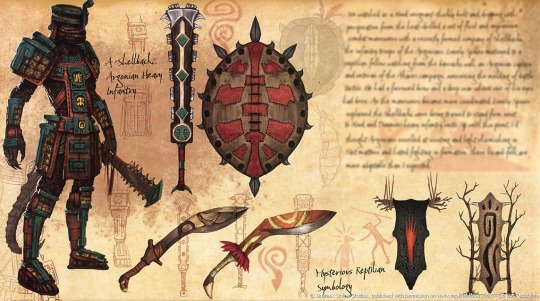
I myself am descended from such people IRL.
I have direct family connections to specific tribes in Northern and central Mexico. Am I bothered seeing a fictional series taking direct artistic inspiration from the ancient cultures of my ancestors? And that our culture is applied to a bunch of weird lizard people no less?
Yes, it does bother me a little. However, when I think about it I also realize there is nothing ignoble about the Argonian people or how they are represented in game or art. I mean look at them. What is there to be ashamed of when you look at them, talk to them, *see* the Argonians and how they live?
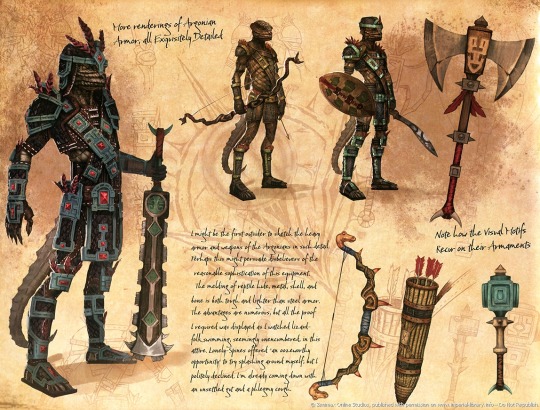
The Argonians are quite frankly, super fucking cool badasses. They have a complicated, dark, heroic, and fascinating history. Just like my ancestors. Why would I shy away from seeing the culture of my ancestors inspiring a proud fictional civilization?
There's nothing to be ashamed of when I see my culture represented or taken inspiration from as long as it is not being used in a demeaning or insulting manner.
I don't feel Bethesda is acting with racist or ill intentions when they take artistic inspirations from real cultures. I want to give them credit. A lot of very intelligent and learned people work for Bethesda. Many of their creatives come from all over the world and from many different cultural backgrounds.
For example! Many of the artists who worked on the western inspired civilizations of Cyrodiil and Skyrim were of East Asian, South Asian, and African descent. They took it upon themselves to learn the artistic cultural stylings they wanted to take inspiration from and to represent them in an authentic but still creative and unique way. This is what any good fantasy series should be able to do.
They know the world is huge and every culture is endlessly diverse. There should be no shame in depicting or taking inspiration from a culture or their artistic style as long as such inspiration and depiction is done diligently, honestly, and with respect.
I feel that the art and artists of TES have faced up to this challenge and expectation and have (largely) met it. There are some examples that do make me roll my eyes, but even these are largely just cases of lazy artistic expression or generic inspiration.
All in all, artists and creatives absolutely can and should do more to ensure their inspirations from non-western cultures are done with tact and respect. I personally feel the creative behind TES have been meeting expectations in this regard and have done a fair job of taking inspiration without being insulting.
38 notes
·
View notes
Text

Article Link
"Minnetonka first started selling its “Thunderbird” moccasins in 1965. Now, for the first time, they’ve been redesigned by a Native American designer.
It’s one step in the company’s larger work to deal with its history of cultural appropriation. The Minneapolis-based company launched in the 1940s as a small business making souvenirs for roadside gift shops in the region—including Native American-inspired moccasins, though the business wasn’t started or run by Native Americans. The moccasins soon became its biggest seller.

[Photo: Minnetonka]
Adrienne Benjamin, an Anishanaabe artist and community activist who became the company’s “reconciliation advisor,” was initially reluctant when a tribal elder approached her about meeting with the company. Other activists had dismissed the idea that the company would do the work to truly transform. But Benjamin agreed to the meeting, and the conversation convinced her to move forward.
“I sensed a genuine commitment to positive change,” she says. “They had really done their homework as far as understanding and acknowledging the wrong and the appropriation. I think they knew for a long time that things needed to get better, and they just weren’t sure what a first step was.”

Pictured: Lucie Skjefte and son Animikii [Photo: Minnetonka]
In 2020, Minnetonka publicly apologized “for having benefited from selling Native-inspired designs without directly honoring Native culture or communities.” It also said that it was actively recruiting Native Americans to work at the company, reexamining its branding, looking for Native-owned businesses to partner with, continuing to support Native American nonprofits, and that it planned to collaborate with Native American artists and designers.
Benjamin partnered with the company on the first collaboration, a collection of hand-beaded hats, and then recruited the Minneapolis-based designer Lucie Skjefte, a citizen of the Red Lake Nation, who designed the beadwork for another moccasin style and a pair of slippers for the brand. Skjefte says that she felt comfortable working with the company knowing that it had already done work with Benjamin on reconciliation. And she wasn’t a stranger to the brand. “Our grandmothers and our mothers would always look for moccasins in a clutch kind of situation where they didn’t have a pair ready and available to make on their own—then they would buy Minnetonka mocs and walk into a traditional pow wow and wear them,” she says. Her mother, she says, who passed away in 2019, would have been “immensely proud” that Skjefte’s design work was part of the moccasins—and on the new version of the Thunderbird moccasin, one of the company’s top-selling styles.
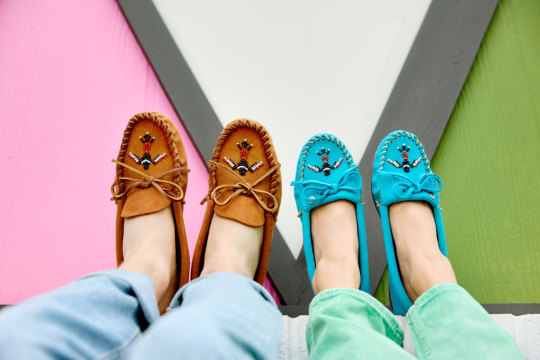
[Photo: Minnetonka]
“I started thinking about all of those stories, and what resonated with me visually,” Skjefte says. The redesign, she says, is much more detailed and authentic than the previous version. “Through the redesign and beading process, we are actively reclaiming and reconnecting our Animikii or Thunderbird motif with its Indigenous roots,” she says. Skjefte will earn royalties for the design, and Minnetonka will also separately donate a portion of the sale of each shoe to Mni Sota Fund, a nonprofit that helps Native Americans in Minnesota get training and capital for home ownership and entrepreneurship.
Some companies go a step farther—Manitobah Mukluks, based in Canada, has an Indigenous founder and more than half Indigenous staff. (While Minnetonka is actively recruiting more Native American workers, the company says that employees self-report race and it can’t share any data about its current number of Indigenous employees.) Beyond its own line of products, Manitobah also has an online Indigenous Market that features artists who earn 100% of the profit for their work.
White Bear Moccasins, a Native-owned-and-made brand in Montana, makes moccasins from bison hide. Each custom pair can take six to eight hours to make; the shoes cost hundreds of dollars, though they can also be repaired and last as long as a lifetime, says owner Shauna White Bear. In interviews, White Bear has said that she wants “to take our craft back,” from companies like Minnetonka. But she also told Fast Company that she doesn’t think that Minnetonka, as a family-owned business, should have to lose its livelihood now and stop making moccasins.
The situation is arguably different for other fashion brands that might use a Native American symbol—or rip off a Native American design completely—on a single product that could easily be taken off the market. Benjamin says that she has also worked with other companies that have discontinued products.
She sees five steps in the process of reconciliation. First, the person or company who did wrong has to acknowledge the wrong. Then they need to publicly apologize, begin to change behavior, start to rebuild trust, and then, eventually, the wronged party might take the step of forgiveness. Right now, she says, Minnetonka is in the third phase of behavior change. The brand plans to continue to collaborate with Native American designers.
The company can be an example to others on how to listen and build true relationships, Benjamin says. “I think that’s the only way that these relationships are going to get any better—people have to sit down and talk about it,” she says. “People have to be real. People have to apologize. They have to want to reconcile with people.”
The leadership at Minnetonka can also be allies in pushing other companies to do better. “My voice is important at the table as an Indigenous woman,” Benjamin says. “Lucie’s voice is important. But at tables where there’s a majority of people that aren’t Indigenous, sometimes those allies’ voices are more powerful in those spaces, because that means that they’ve signed on to what we’re saying. The power has signed on to moving forward and we agree with ‘Yes, this was wrong.’ That’s the stuff that’s going to change [things] right there.”"
-via FastCompany, February 7, 2024
#indigenous#indigenous artists#indigenous art#moccasins#thunderbird#native american#native american art#cultural appropriation#indigenous peoples#cultural representation#minnesota#minnetonka#minneapolis#red lake nation#ojibwe#anishinaabe#reconciliation#fashion#fashion news#good news#hope#indigenous designers#native artist#indigenous artist
1K notes
·
View notes
Text

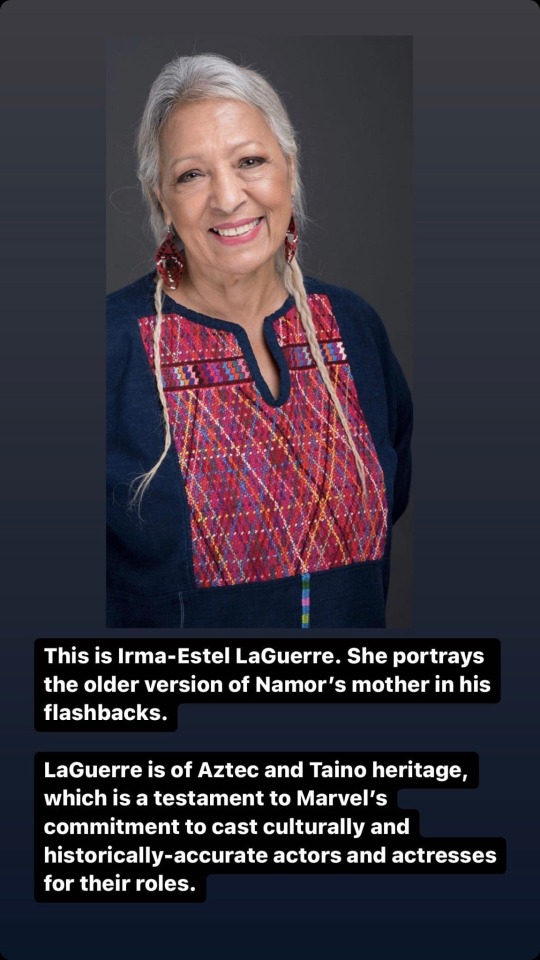



“Black Panther Wakanda Forever” has a supporting cast of actors and actresses, without whom the story may not have been as effective. Sure, our main leads and the secondary characters are cool and awesome, and the story is amazing, but it’s people like the ones above who play small but very important roles in the story.
Having a young boy witness the trauma of his people be subject to horrors no child should be privy to, and hold on to that fear and rage with a grip so tight it transforms into vengeance that burns within a god-king hell-bent on protecting his people… little Manuel Chavez may not have been onscreen long, but his presence very much informed the charismatic K’uk’ulkan who is both filled with rage and kindness in equal measure.
Like Manuel, Irma-Estel LaGuerre and María Mercedes Coroy may not have been onscreen much, but their portrayal of a mother who, for the sake of her unborn son, must ingest a concoction to save both her and her people from the raging fires of colonialism resonates with many. In the film, K’uk’ulkan wonders what it is like to be a people in a pristine land who never have to leave. His mother loved him, cared for him, and wished for him to bury her in the land she loved so much, even if it was being desecrated by people who most certainly did not belong there to begin with. LaGuerre and Coroy portrayed a woman who had so much love to give, yet lost so much; it is to nobody’s surprise that her son adopted the name “Namor”, itself shortened from “el niño sin amor”, the child without love.
Without Josué Maychi, there may well not have been the inclusion of the Yucatec Mayan language in the film. Maychi’s role as the shaman who was guided by a god to retrieve a plant grown in Vibranium-rich soil to heal his smallpox-afflicted people is very important to the story, as without him, Talokan is as good as nonexistent. It is thanks to the shaman that Talokan was able to thrive as we see it do in the film.
María Telón Soc portrays a Mayan elder in the film. Her role, though small, is crucial as she is one of the guiding forces who help convince K’uk’ulkan mother to ingest the herbal drink to save her and her unborn son. Like the other actors and actresses mentioned above, she may not have been onscreen for long, but her presence informs the decisions we see the other Mayan-Talokanil make.
#mcu#black panther wakanda forever#wakanda forever spoilers#mcu namor#k’uk’ulkan#secondary characters#background characters#supporting cast#cultural representation#cultural heritage#marvel cast#josue maychi#maria mercedes#my thoughts#really makes you think 🤔#yucatán#mayan culture#mayan civilization#historical reference
1K notes
·
View notes
Text
'Did you hear that? That is us. That is our ancestry, our history, our story. We were never commoners, you see, we were members of the staff of the Royal Palace.' The moment passed in a heartbeat. But it did not matter. What mattered was that it existed. To be present in history, even as nothing more than a chuckle, was a universe away from being absent from it, from being written out of it altogether. A chuckle, after all, could become a foothold in the sheer wall of the future.
Arundhati Roy, The Ministry of Utmost Happiness
#Arundhati Roy#The Ministry of Utmost Happiness#transgender#queer history#trans history#queer representation#cultural representation#book quotes#quotes#bookblr#books#currently reading#booklr#representation
3 notes
·
View notes
Text
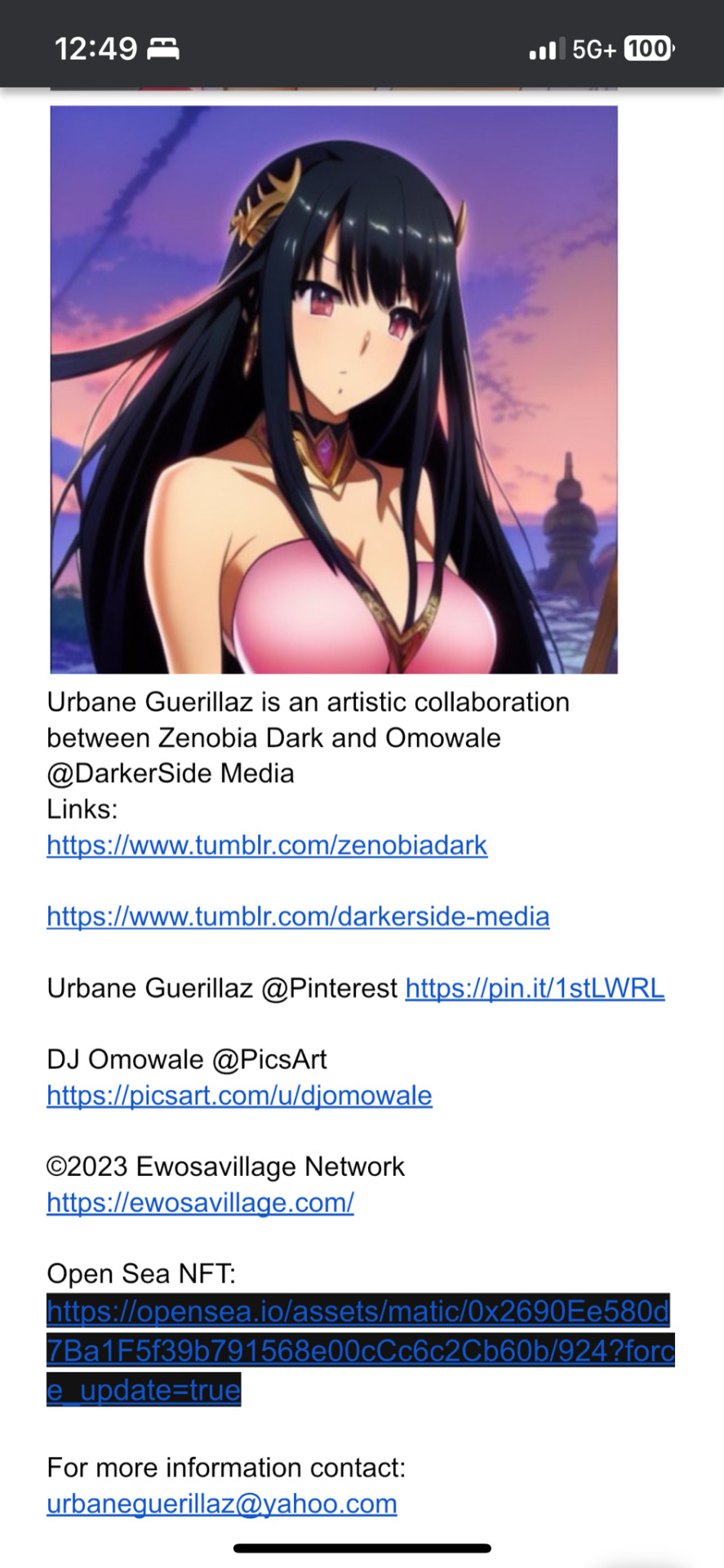
#urbane#urbane guerillaz#fashion#digital art#secret society#culture#cultural representation#cultural resistance
3 notes
·
View notes
Text

Holidays: Indigenous Heritage Month (November)
That hand is not the color of yours, but if I prick it, the blood will flow, and I shall feel pain. The blood is of the same color as yours. God made me, and I am a Man.
As of 2023, there are 547 federally recognized tribes in the United States but somewhere between 200 to 400 unrecognized tribes.
#indigenous people#indigenous heritage#indigenous recognition#indigenous#native american#native american heritage month#indigenous peoples month#native american history#native culture#cultural heritage#Peoples of the world#Cultural representation#Culture aesthetics#Culture moodboard#moodboard#aesthetic#Standing Bear#Living memory
2 notes
·
View notes
Note
Is it really so difficult to accept that the representation of the POC in Eurocentric fantasy occupies the same position as the representation of the European in Africocentric fantasy or Asiacentric fantasy. Otherwise, we are talking about the privileges of some groups over others, no matter how paradoxical for many it may sound.
Truly... For USian showrunners any use of European folklore and fantasy must reflect the imbalance of representation in the US' reality. They don't think of countries were POC are the majority (aka 80% of the globe according to their definitions) and the minorities in these countries. For them the US' reality is the only valid one and only these social issues must be addressed (even the shows are in foreign countries) and only in the way that's familiar to USian "progressives". And I put that in quotes because this idea is the opposite of progression.
"in our country POC don't get the same opportunities and have been erased from history and now we do this as a balance act". Okay yes, I hear it. It is a totally valid concern but it has nothing to do with how other nations view their folk creatures. "But our creations must reflect our own social issues" Except it wasn't your creation. You took it from another culture or dead writer with the purpose of "balancing" it - the word used in Rings of Power.
Do you want to add diversity in your local US folklore in a way that makes sense? Sure! Do you want to create POC in your own fantasy setting with amazing powers? Go for it! Do you want to write about POC in a realistic historical setting? Lovely. Just ffs sake don't condescend the other countries for having folklore and established old stories . The type of folklore, may I add, that Africans and Asians have as well. Yes, they are not well represented in your country, but do you think the Chinese, the Afghans and the Ghanaians would change their own ancient myths in their own countries to include people of other phenotypes? No, because folklore doesn't function by default in a country where the people are a minority and never see themselves around. Most countries are pretty homogeneous in appearance.
Immigrants may naturally adapt their stories to the folklore of the land they reside and vice versa, but the US is one of the few countries which, without context, take ancient and traditional stories (not necessarily talking about Tolkien here) from OTHER countries and demand we should be pleased when they change them. And then they don't see that this is disrespectful??
Instead, they see other countries at fault for not accepting their Americanized "vision" for foreign stories - which is usually out of touch with the original culture and changes the issues in the story to put theirs in.
These people don't think beyond the context of their own country. You'll show them a Nigerian series with 100% Black homogenous cast and they'll all go on about how "diverse" it is. Because they don't think of Nigeria at that moment, but of their own country, where many Black people in a setting is diversity. They cannot distinguish the two. If you ask Nigerians in Nigeria if they'd change their pantheons and their traditional stories to put West Asians or East Asians in, just guess what the answer will be.....
Greeks, Brits, Poles, Italians, Iranians, Indians, Ghanaians, Congolese are not Immigrants by default. They are immigrants in your country. And that is only 5% of the Immigrants they have around the world. They have their own countries where they reside, and their gods and anthropomorphic creatures reflect that. They reflect 95% of the population within that nation, and the overwhelming majority of the people belonging to that culture is a satisfied with that. When there is a 95% somewhere that thinks of their creatures a certain way, USians are here to tell them they are bigots. But while all nations do this, USians reprimand only nations they perceive as White and their Cultural Ancestors, because they cannot imagine bigotry and homogeneity among nations they only see as Underprivileged Minorities and Immigrants.
I'm not saying we should not address important issues like racism or the human rights of immigrants! I am saying that not every creative piece across the globe was made to express your issues in the exact same way you need to see them. E.g. in the story it doesn't have to be White people VS Black people. It can be Elves VS Dwarves, and the message will be exactly the same.
15 notes
·
View notes
Text
Since we’re in the age of remakes and remixes, can we get a remake of “Prince of Persia: The Sands of Time” with actual Persian actors, actresses, directors, and just those who can bring Iranian culture and lore to the franchise it’s supposed to be based on? Then, since the Persian Empire was at its height in the 5th century, hopefully we’d see a lot more dark-skinned actors at the forefront.

#prince of persia#sands of time#colorism#brown skin#brownface#cultural representation#representation matters#cultural appreciation#just thought i’d share#tokenism#miscellaneous#jay#miscellaneous jay#black girls who blog#black girls of tumblr#doaom#blackgirlbloggers#blerd#film critic
10 notes
·
View notes
Text
Filipino Stereotypes Revisited: Breaking the Mold in a Global Scene
Explore the shifting landscape of Filipino stereotypes in our latest blog post, where we highlight the inspiring figures redefining our cultural identity on the global stage. #FilipinoPride #BreakingStereotypes
Stereotypes often rear their heads, offering simplified and often inaccurate perceptions of people and cultures in the evolving landscape of cultural representation. In my previous article, I touched upon the topic of Filipino stereotypes, discussing how these preconceived notions could both limit and define us. Today, we’re revisiting this topic to examine how some notable Filipinos are breaking…

View On WordPress
#Bella Poarch#breaking stereotypes#Bretman Rock#Bryanboy#cultural representation#filipina wanderer#Filipino stereotypes#Filipinx
2 notes
·
View notes
Quote
Addressing epistemic injustice involves recognizing the ways in which different forms of social identity can impact the distribution of knowledge and resources, and taking steps to ensure that everyone has equal access to knowledge and is treated with equal respect and consideration. It requires challenging the structural inequalities and biases that contribute to these forms of injustice, and working to create more inclusive and equitable systems of education, knowledge production, and cultural representation.
Pranav Jeevan, ‘Epistemic Injustice: Does Knowledge have Caste?’, Round Table India
#Round Table India#India#Pranav Jeevan#epistemic injustice#social identity#distribution of knowledge and resources#structural inequalities and biases#injustice#education#knowledge production#cultural representation
4 notes
·
View notes
Text
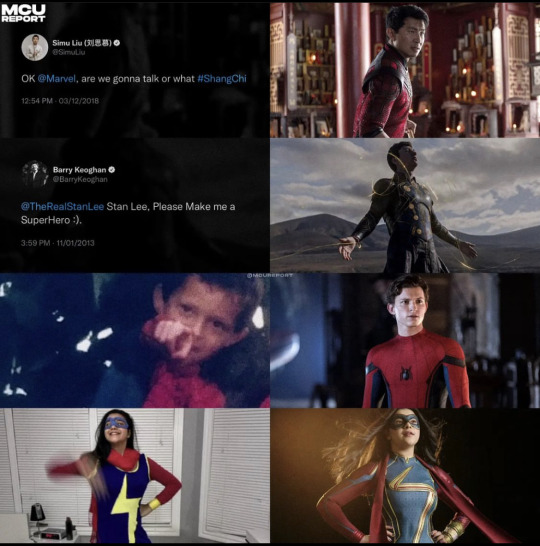
#mcu#simu liu#shang chi#shang chi and the legend of the ten rings#barry keoghan#mcu druig#eternals movie#tom holland#captain america civil war#cacw#spider man homecoming#spider man far from home#spiderman ffh#spider man no way home#spider man nwh#avengers endgame#avengers infinity war#iman vellani#ms marvel series#cultural representation#that is all 😌
2K notes
·
View notes
Text
The Future of Indian Cinema: Regional Rise and Bollywood Shift
Excited about the future of Indian cinema? Share your thoughts and predictions below!
In India’s dynamic film industry, a transformative shift is underway. Regional cinema is surging in popularity, propelled by its authentic narratives, captivating performances, and explorations of India’s diverse cultural landscape. These films are transcending language barriers, captivating audiences worldwide, and redefining the future of Indian cinema. Join us as we delve into this exciting…
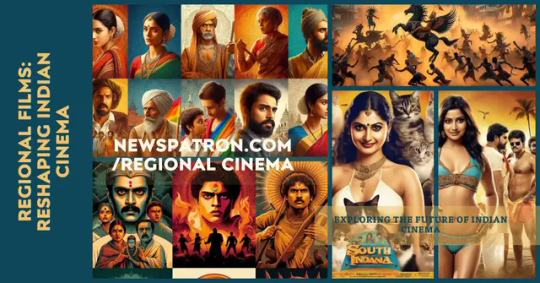
View On WordPress
#audience trends#Bollywood#cultural representation#diversity#future of Indian cinema#pan-India films#regional cinema#storytelling
0 notes
Text

Fashion Designer Alana Hadid, Sister to Well-Renowned Models Bella and Gigi, is leading the charge at Watermelon Pictures, a film production and distribution label.
Described on its website as a "Palestinian-owned independent film distribution, production, and financing" company, Watermelon Pictures is committed to cultural representation, social advocacy, and amplifying the voices of underrepresented filmmakers worldwide.
#Islam ☪️ Channel#Watermelon 🍉 Picture#Film 🎞️ 🎥 Production#Cultural Representation#Alana Hadid | Watermelon 🍉#News 🗞️#Palestinian Owned Company
0 notes
Text
Ironic that the Owl House is trending the same day that I’m writing an essay probably no one will read but me about why the Owl House’s cultural representation sucks hard actually and we need to acknowledge that and also talk about why we get so upset over bad/mediocre lgbt+ and neurodivergent rep but not cultural rep.
I just wanna add I love the Owl House- I’ve been following it since it was first green lit and vividly remember when the first episode came out a few weeks before my birthday and how the fandom blew up after enchanting grom fright - I like this show, but Luz as a Latina character is mid at best
#owl house#the owl house#luz noceda#cultural representation#Latina representation#fandom#writing#lgbt representation#lgbt#neurodivergent representation#neurodivergent
1 note
·
View note
Text
There is something about proudly proclaiming a show "tumblrista catnip" that makes me emotional.
Something about how for years tumblrinas were ridiculed by show creators.
Something about Supernatural having a meta episode set at a convention with all the weirdo fans that made the main characters uncomfortable. Something something about Becky and the message that fangirls are gross and obsessive.
Something about Sherlock and the way fans were portrayed as crazy obsessive nutjobs for trying to figure out how he faked his death.
Something about creators mocking fandoms, dismissing them as freaks. Something about queer people not being welcome to engage in their creations because "why do you have to make everything gay?"
Something about the malicious culture of queerbaiting throughout the 2000s/2010s, followed by Bury Your Gays tropes across the media landscape because hell, you should be grateful we even gave you queer characters to begin with - and everyone dies in our show! You ain't special!
Something about Destiel questions being banned from conventions...
And then...
Something instead about Good Omens, and letting the story adapt naturally, embracing the fanbase and leaning into the fanservice.
Something about Our Flag Means Death, and the genuine outpouring of love and affection between cast, crew, and fandom that culminated in an explosion of fanworks that were never once mocked or deemed gross or wrong.
Something about Sandman, and staunchly digging in their heels on the queerness of it all, refusing to give in to the homophobes and instead avidly mocking THEM on social media rather than us.
Something about the writers hearing about fandoms favourite ships and excitedly stating that YES! We DID lean into that because it happened naturally and made sense.
Something about a firefighter coming out as bisexual after 7 seasons...
So yeah, something about a new high quality show made FOR US. By creators that love US. Respect US, and WANT our love.
Something about US FINALLY being a target audience for the best shows being made on TV now.
Tumblrista catnip. Creators saying "we made this for you. You are important. Your voices have been heard."
It just... all got a bit overwhelming for a moment there.
#dead boy detectives#neil gaiman#representation matters#queer culture#the sandman#good omens#ofmd#911#destiel#supernatural#sherlock#fandom history#tumblrista catnip#look how far we've come
3K notes
·
View notes